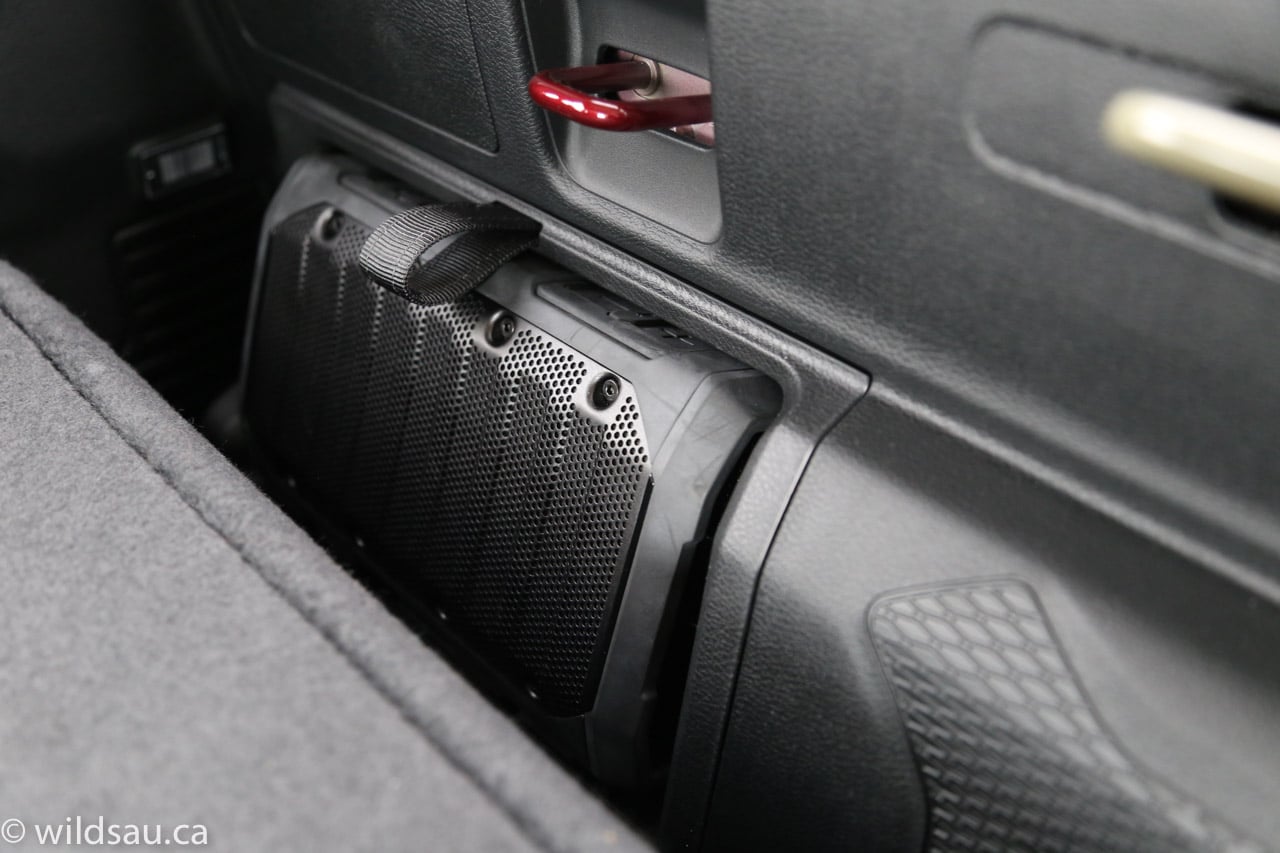The Wrangler-based truck is cool, limited in utility and expensive
Review and photos by Tom Sedens
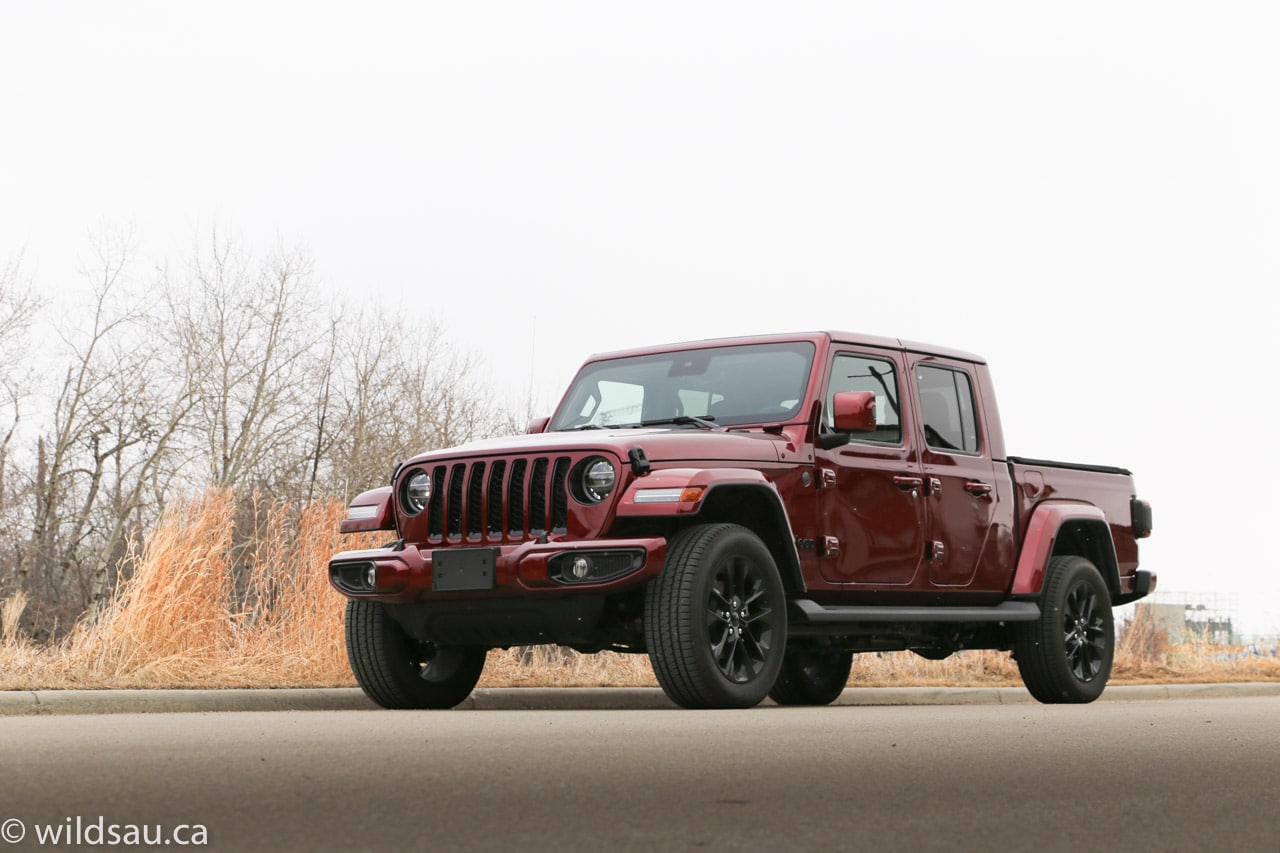
OK, so let’s just get this part out of the way once again, because it is one of the hardest parts of the bitter Gladiator pill to swallow.
Pricing: 2021 Jeep Gladiator
Base price (High Altitude trim): $52,245
Options: $100 Snazzberry Pearl paint; $8,995 Customer Preferred Package 26N; $1,450 Advanced Safety Group; $295 Auxiliary switch group; $495 roll-up tonneau cover; $150 all-weather mats; $1,795 automatic transmission; $7,395 EcoDiesel engine; $395 portable Bluetooth speaker; $650 spray-in bedliner; $250 Trail Rated kit
Freight: $1,895
A/C tax: $100
Price as tested: $76,210
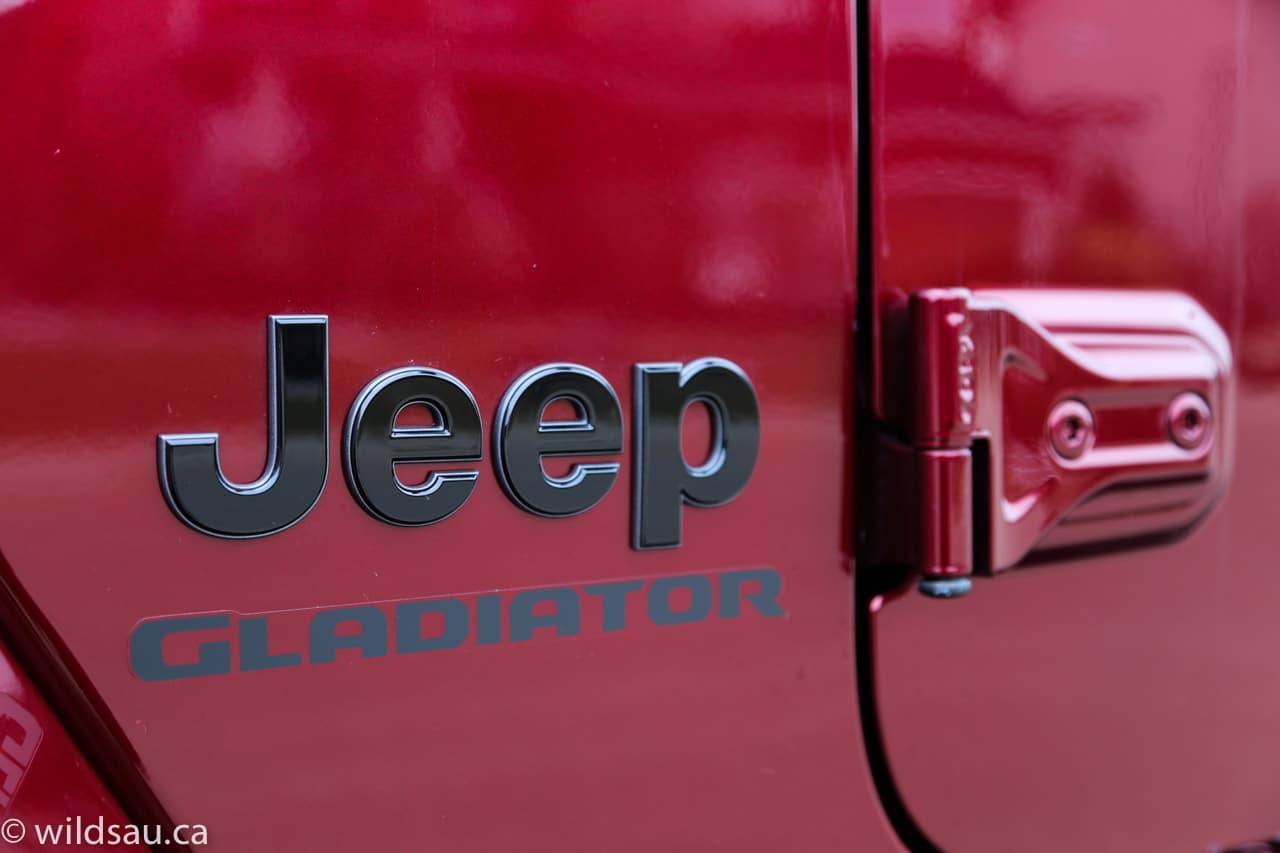
Yep. No typos there, and no math errors. I actually went over everything just to make sure. So while Jeeps are, on the best of days, a questionable value in terms of what most people use them for, this becomes a whole different conversation because this places my particular Gladiator review sample in new, stratospheric pricing heights that would allow you to shop in some very lofty German showrooms.
But whoever is buying a truck like this isn’t cross-shopping the Gladiator with anything from Germany, are they? No, probably not, but that doesn’t make the price any more palatable. I reviewed a Gladiator last year and it’s $64,000 price tag shocked most people. This one threw them for a complete loop.
Well, let’s see what your $80,000 after taxes gets you, shall we?
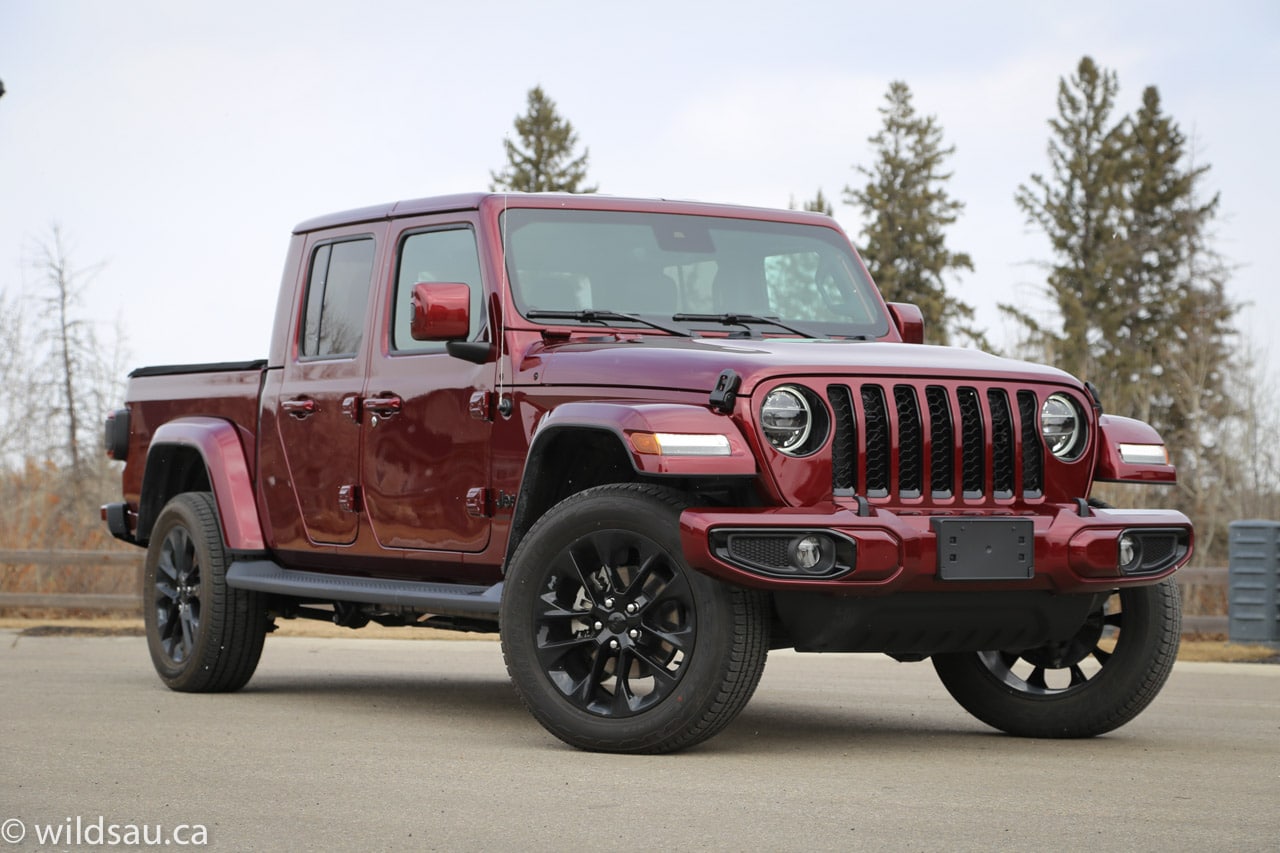
Exterior
I really do love the Gladiator’s looks. I have since they showed off the concept vehicle. It combines the iconic Jeep styling and adds the small box. The squared-off shape, traditional upright windshield and brutish fenders, the pushed-right-to-the-front axle and the finer details all work together to give it a military-grade appearance, like a small Hummer truck and it really appeals to me.

If you’re wondering what you get for that cryptically-named $9,000 option package, lots of it is aesthetic. Body-coloured mirrors, front and rear bumpers, grille, fender flares, door and tailgate handles are all part of this. What’s that body colour, you ask? Why it’s Snazzberry! There are also plenty of dark exterior accents and big honkin’ 20-inch rims shod with 275/55-sized boots.

Lighting is LED all the way around, including headlights, parking lamps and tail lights.
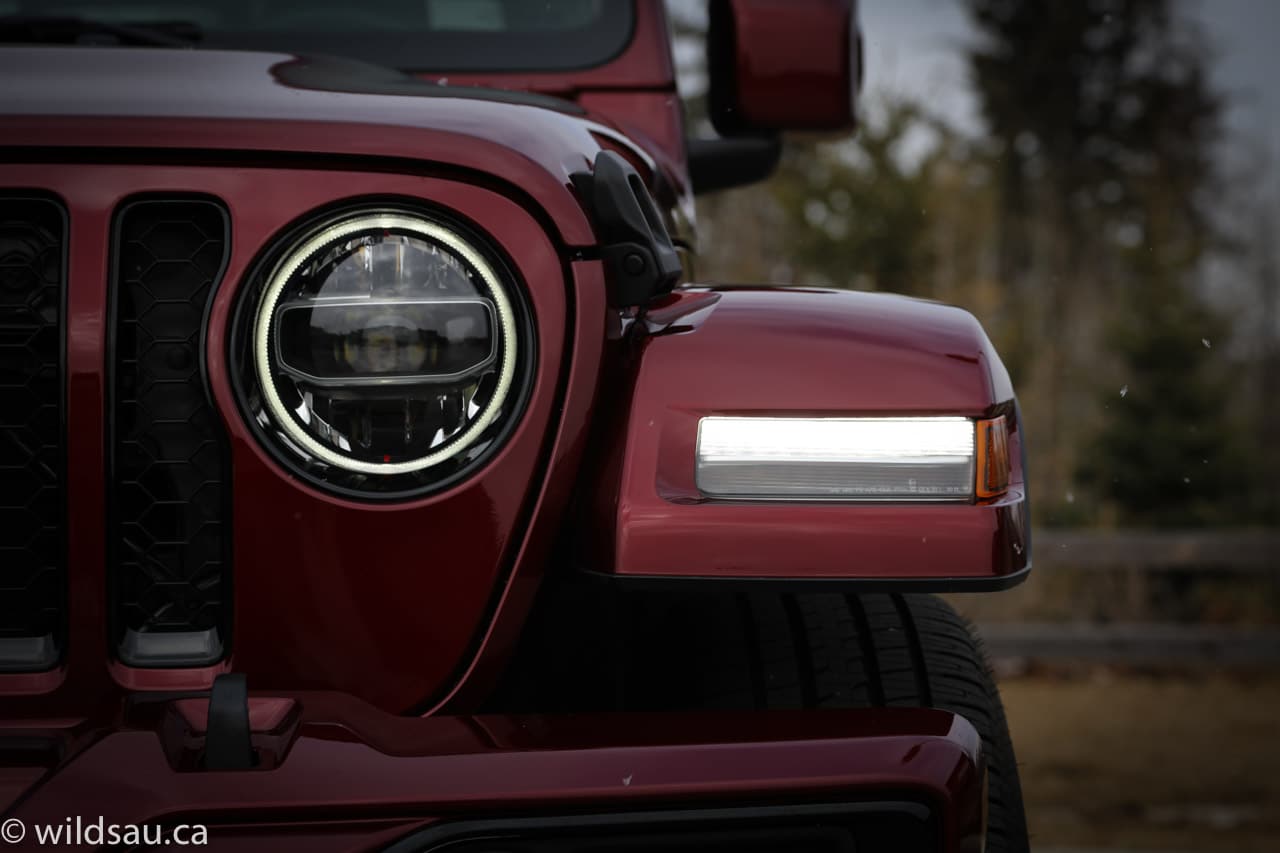
Interior/Tech/Convenience
The pricey option package adds caramel interior accents and premium wrapped dash bezels with caramel stitching. And those things look good. Materials are surprisingly upscale if you’ve not been in a latest-model Jeep Wrangler. There are more soft-touch materials than ever before, ergonomics aren’t completely hateful and while the cabin is unlike anything else with its exposed rollbar and roof panels, it’s quite livable day to day.
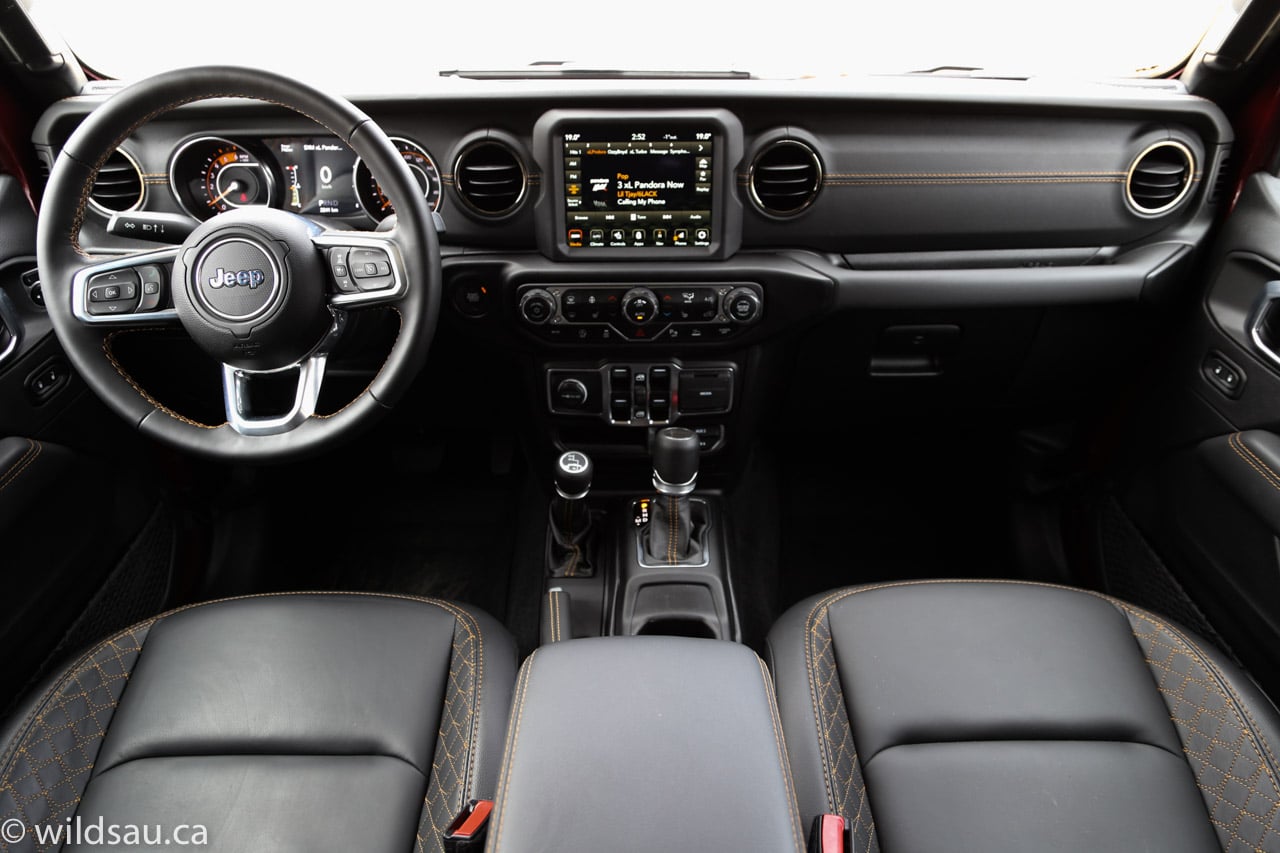
The manually-adjustable (!) heated leather seats are comfortable and the stitching on them looks deluxe.
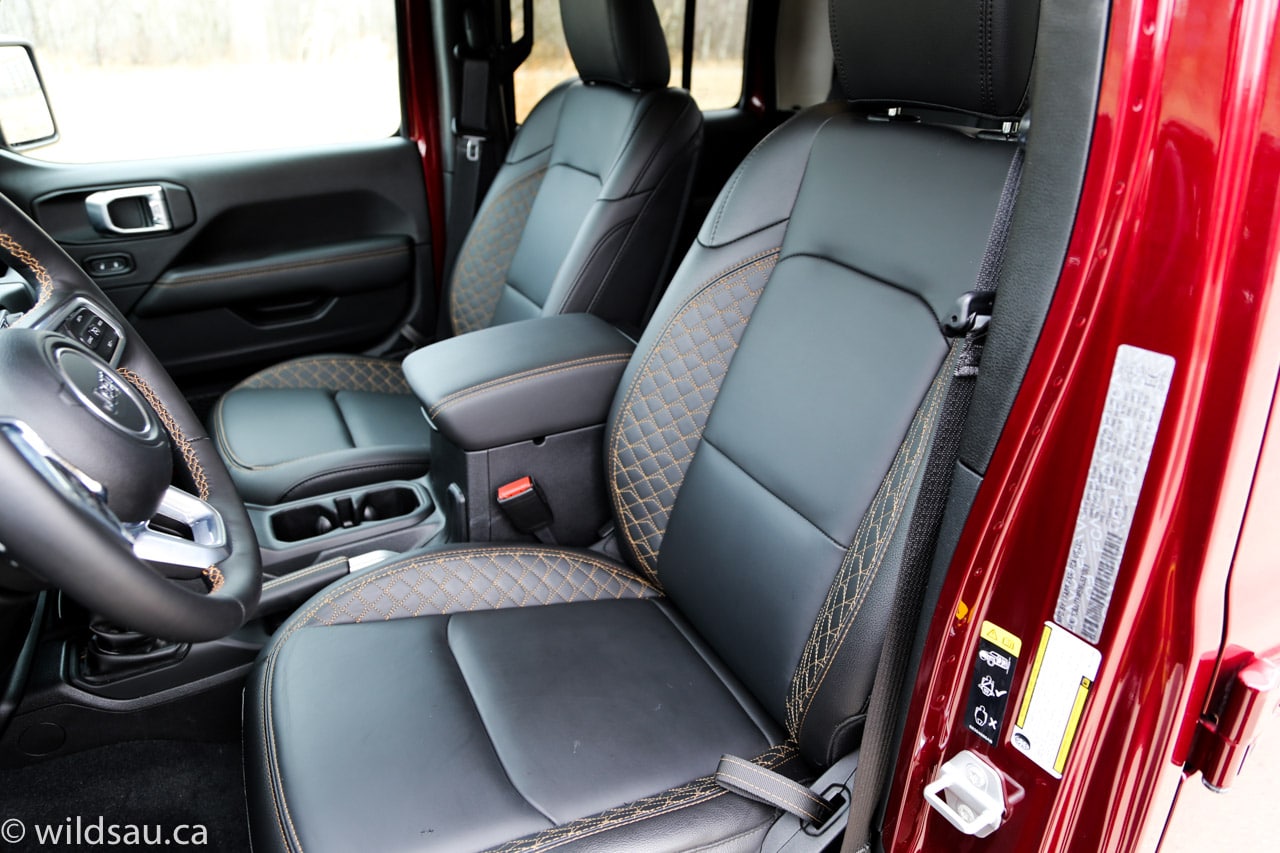
Behind the leather-wrapped heated steering wheel are traditional gauges split by a 7-inch driver information screen – it offers up a ton of easily accessible information.
The dash contains the dual-zone automatic climate control system and a 7-inch Uconnect touchscreen that manages everything from your phone and navigation functions, to the sound system and vehicle settings. It also plays nicely with Apple CarPlay and Android Auto.

It takes most passengers a moment to figure out the power-window switches are on the centre stack – that’s because the doors are removable.
Optioned the way my Gladiator was, you’ll end up with a full suite of driver assistance technology. There’s a back-up camera, automatic high-beams, Brake Assist, forward collision warning with active braking, adaptive cruise control and blind spot monitoring.
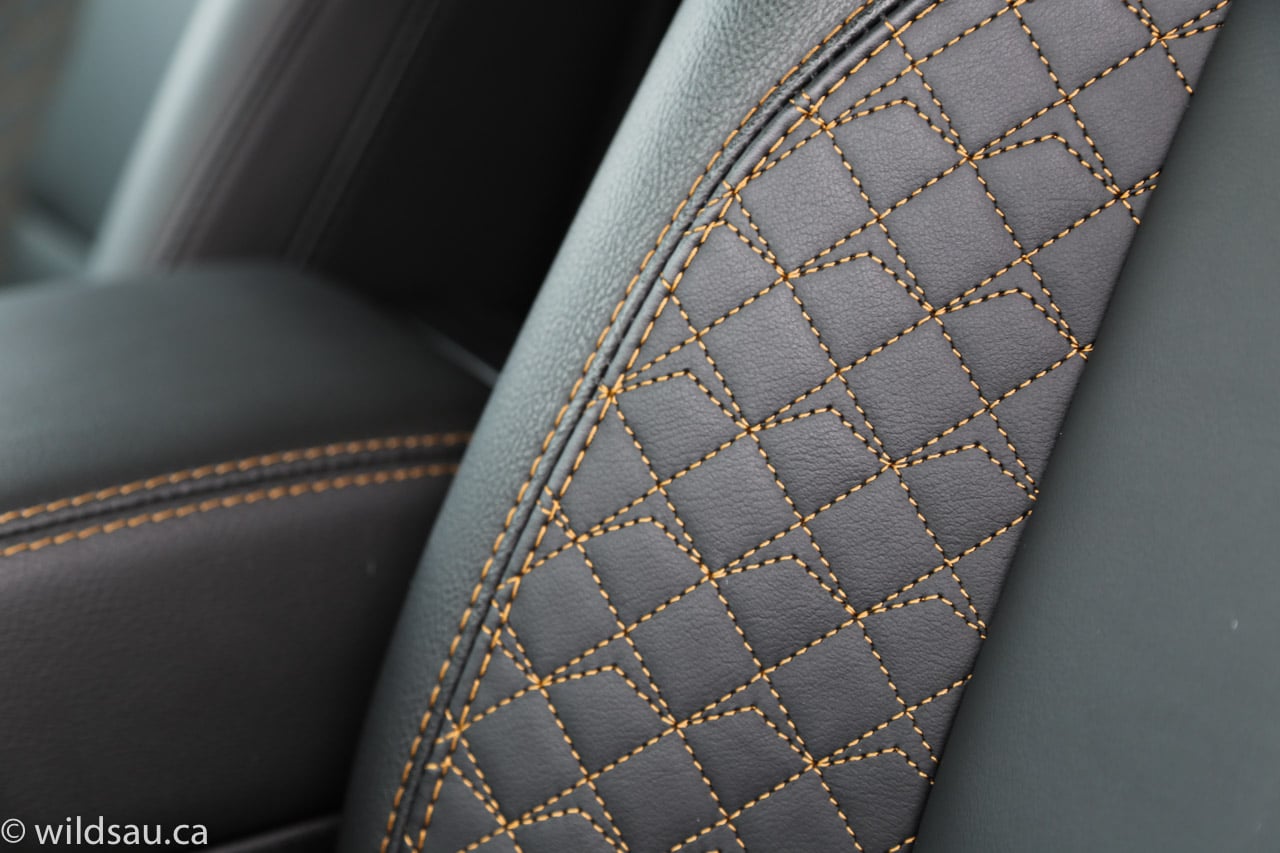
Rear Seats
As this is based on the Wrangler, you won’t find a wealth of rear-seat room, but it’s not terrible either.
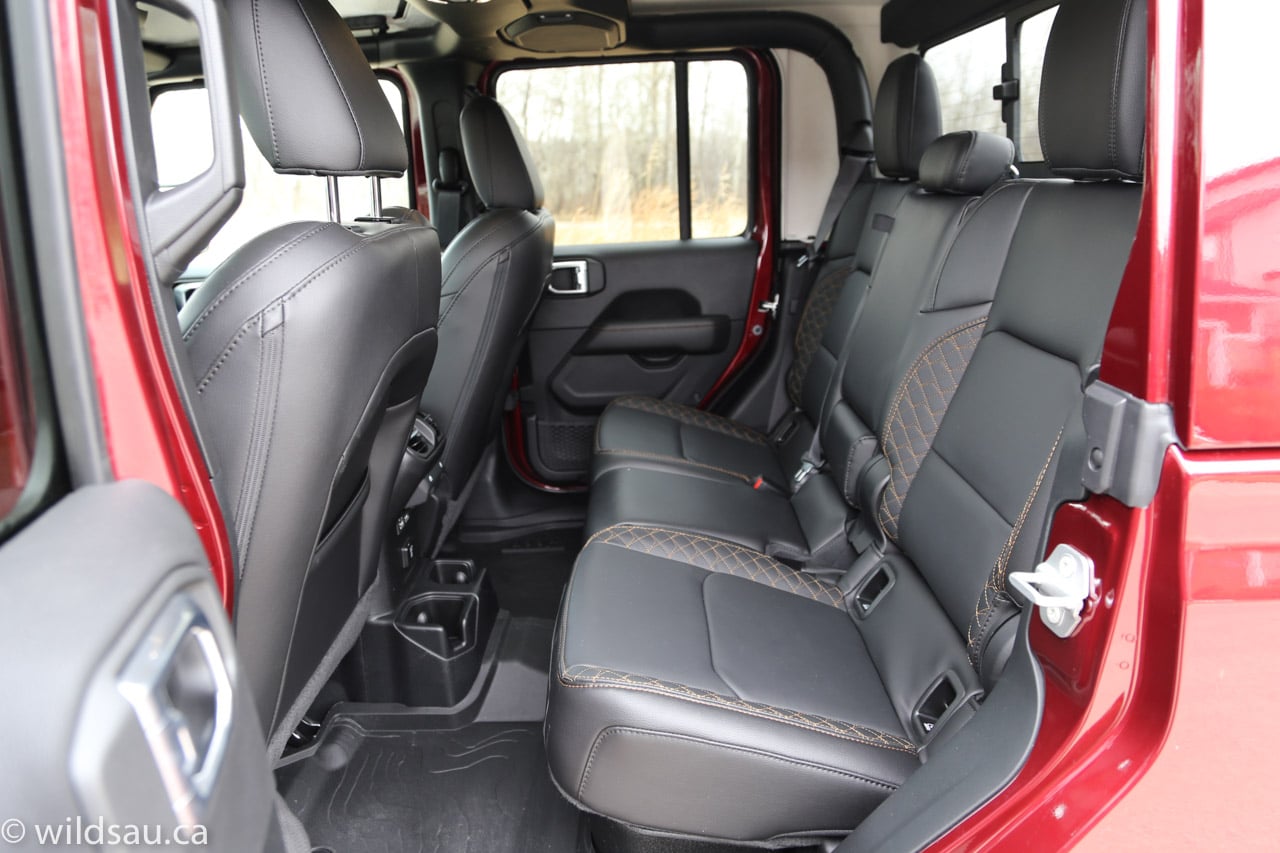
Because the seats are very upright, they’re not nearly as comfortable as the front ones. I had enough leg and head-room at 5’10”. There are air vents, cupholders and USB charging ports.
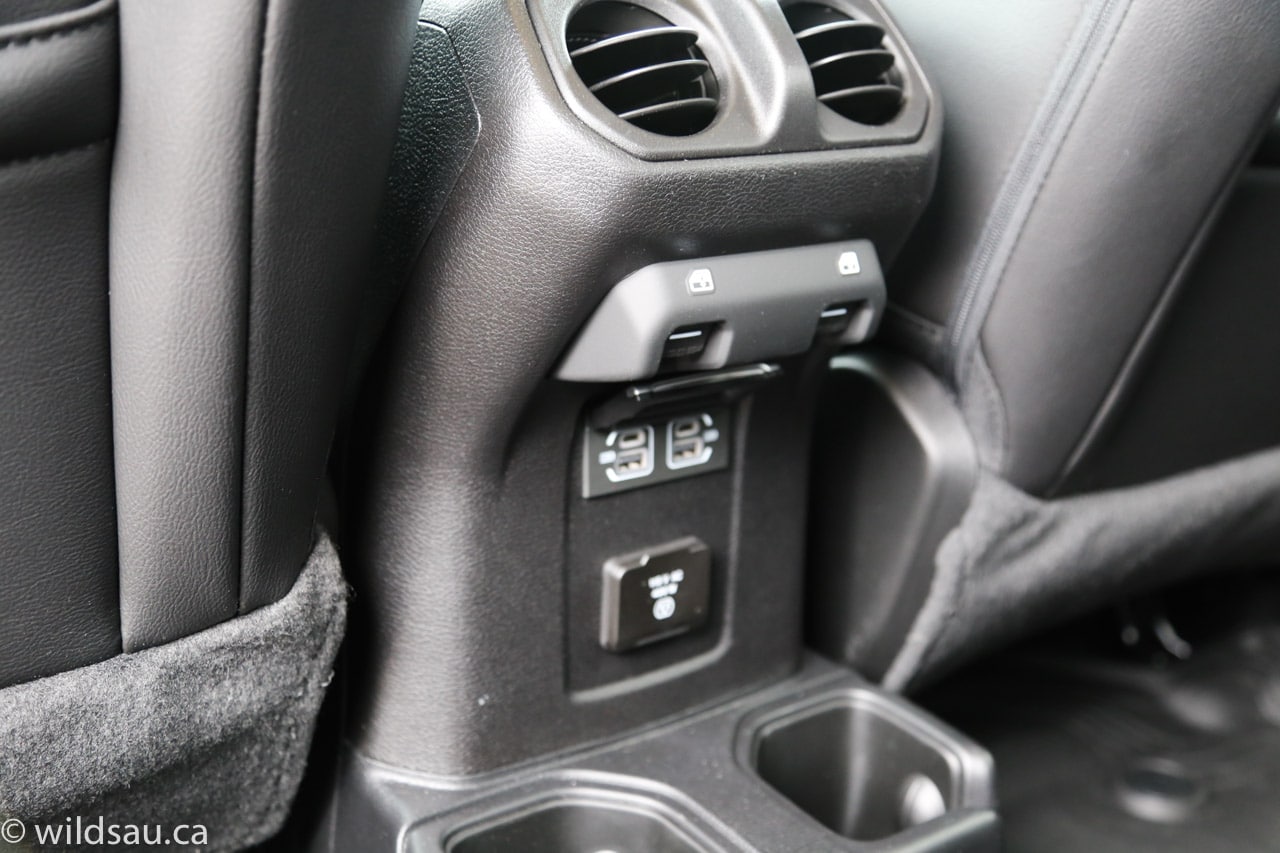
Storage
There are only a few places to put your stuff around the cabin, including mesh door pockets, a small bin under the armrest and an equally small glove compartment.
The rear bench seat splits 60/40. Fold the seats down, and you’ll make a large rectangular space kind of like a parcel shelf behind the front seats.
Flip the seat cushions up and out of the way, and you get access to the storage bins underneath. This is where you also find labeled storage for the hardware when you remove the doors and roof panels – brilliant!
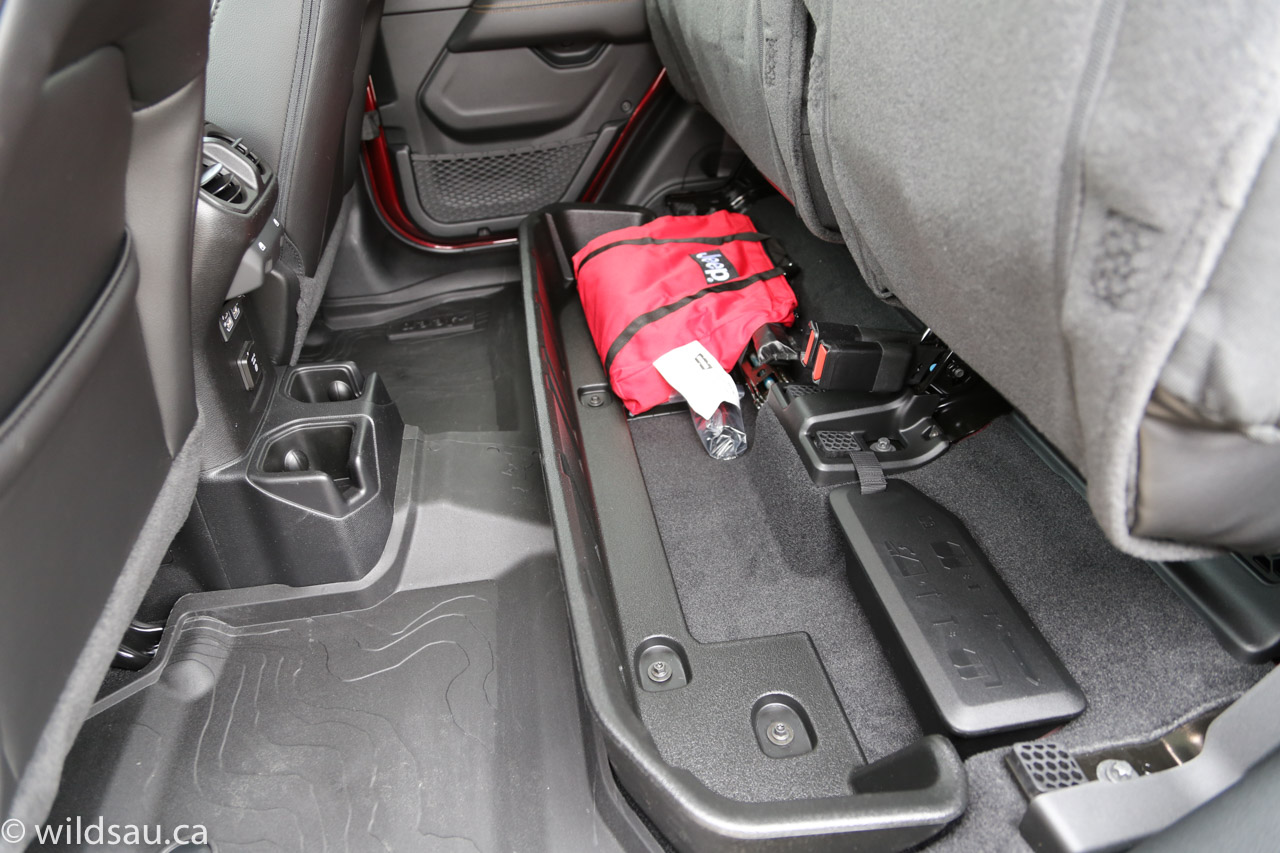
Of course there’s the truck box too – it offers about 1000 litres of capacity, and I’ll get to that a bit later.
Under the Hood
If you were reading carefully during the pricing section, you’ll have noticed one of the big numbers is what lurks under this particular Gladiator’s hood. It’s the long and anxiously awaited 3.0L EcoDiesel V6 engine. And yes, it comes at a very dear price.
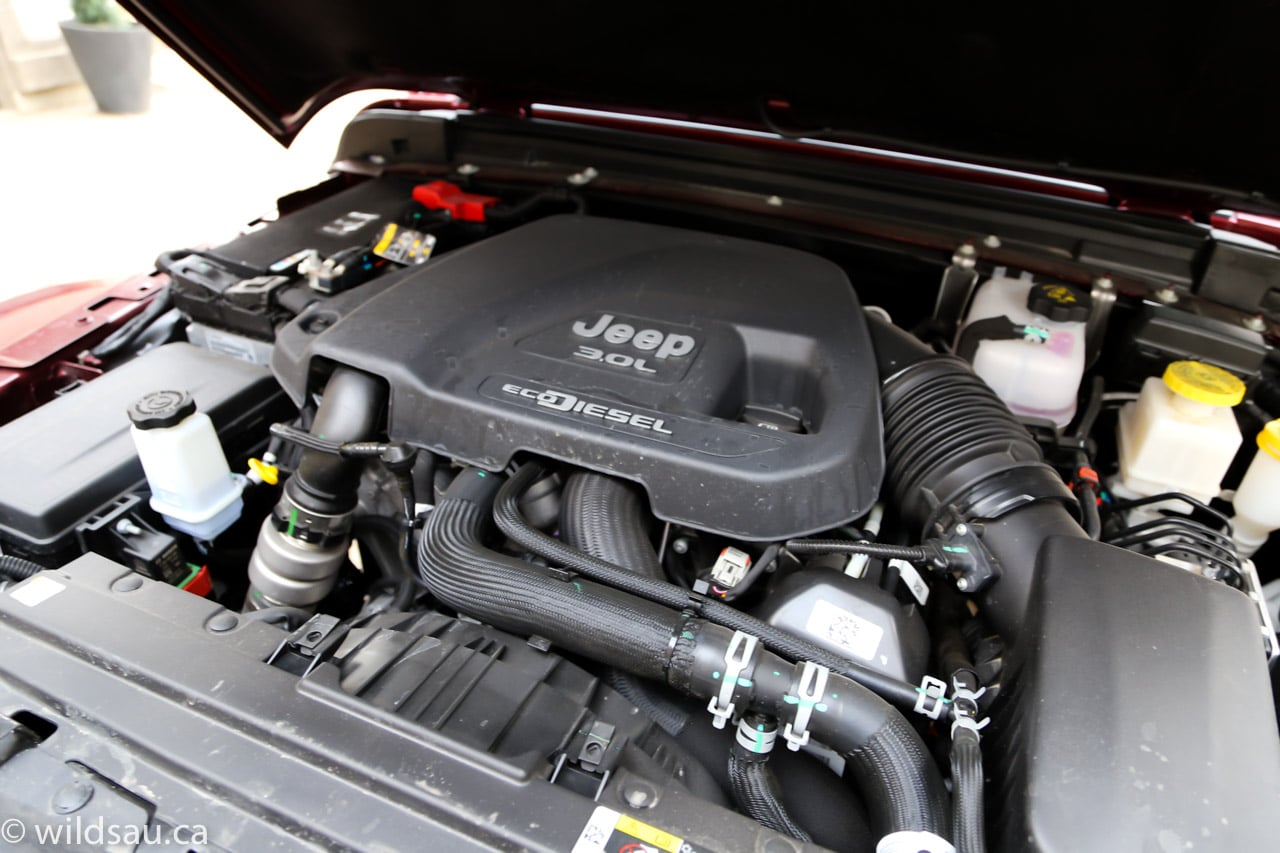
It puts out 260 HP and the all-important 440 lb.ft of torque at a nice low RPM. It is mated to the 0ptional 8-speed automatic transmission and drives Jeep’s legendary 4×4 system.
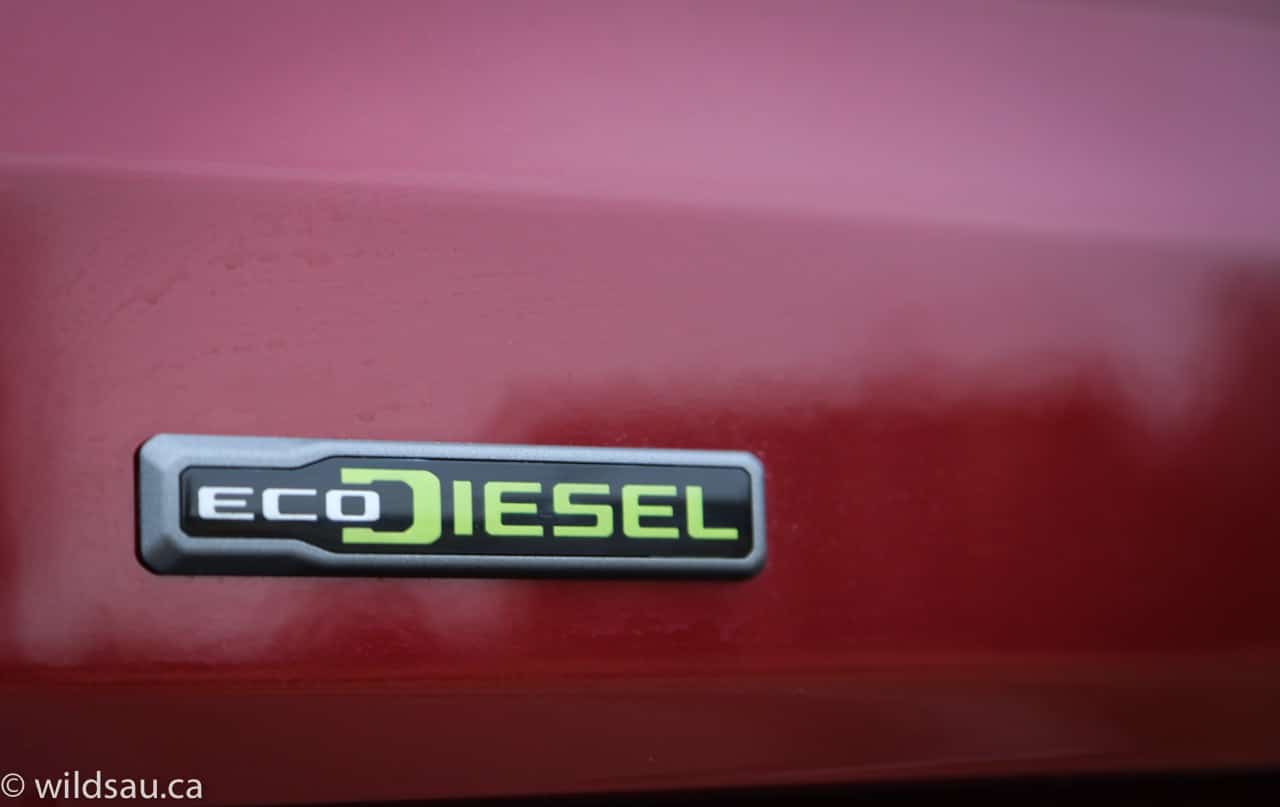
Torque isn’t the only winning feature here – the fuel economy sees an improvement – this combination is rated at 10.8/8.5 L/100km (city/highway) and we actually ended up seeing an average of 10.1 L/100 km which included a higher amount of highway mileage than usual. For a vehicle like this, that’s really good in particular after the fuel economy I saw from the gas-powered Gladiator I reviewed last year.
The Drive
I really enjoyed driving the Gladiator around town. The high driving position, the rough and tumble suspension, the engine – it all works together in harmony to make you feel you could go anywhere. Which you basically can. That said, it’s no fun to park as the turning circle is horrifying huge.
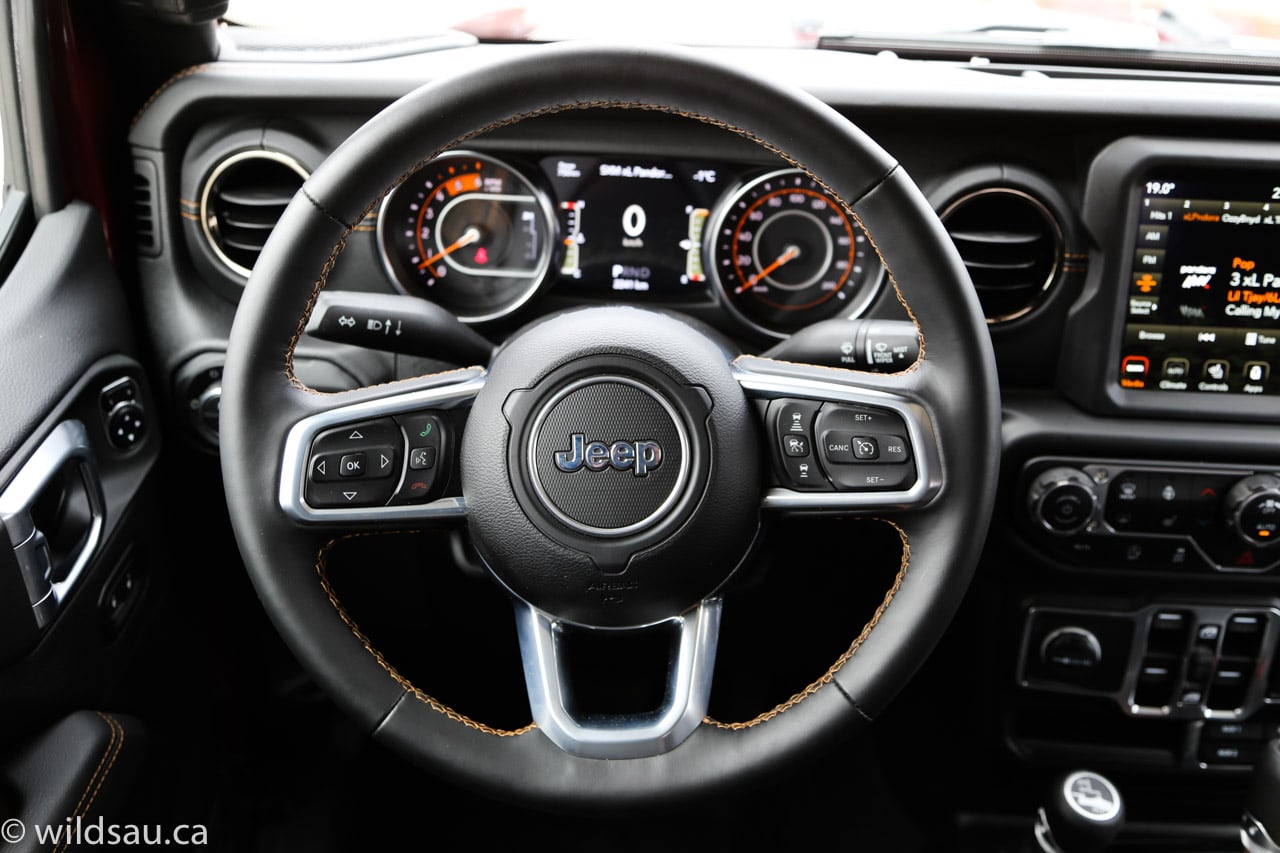
So the diesel engine definitely has its pros – and cons. First of all, it’s eminently drivable around town. The prodigious helping of torque when you accelerate is delicious and addictive, and it makes it very easy to drive. However I found that at higher speeds, the engine easily runs out of breath. And so you will found yourself taking longer than you may have expected to pass on the highway, etc. The transmission is smooth and the programming is excellent – it always felt like it was in the right gear. I was very impressed with it.
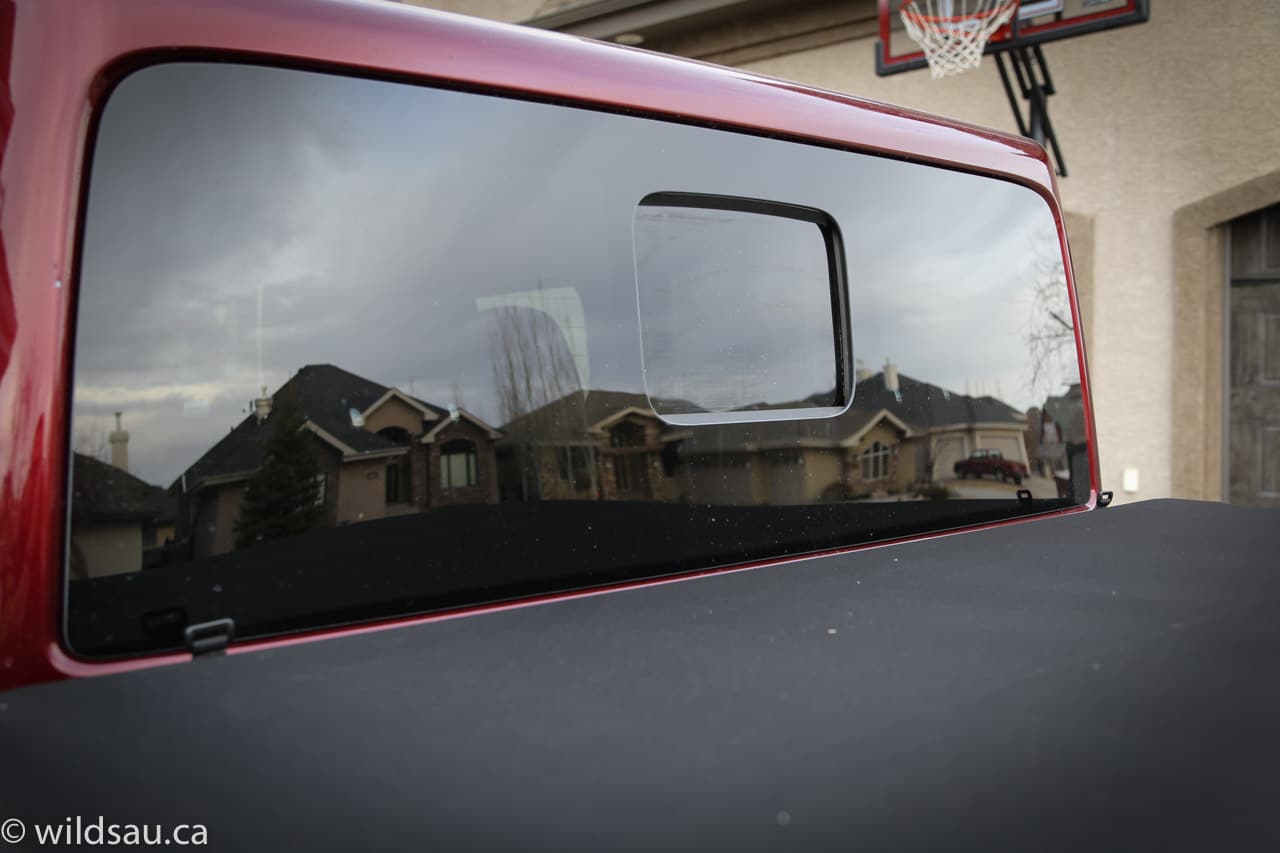
The expensive option package I mentioned earlier includes “sport suspension” – that includes front and rear “sport” shock absorbers. It doesn’t specify what this means, but after driving it, it became clear this suspension is better suited for on-road handling. The ride was quite good, while remaining Jeep-like, but the handling was surprisingly great for a 4×4 with a long wheelbase. Not only that, but it wandered less on the highway. It’s still not great on the open road, but notably improved over the last Gladiator I drove.

The diesel engine fires up with quite a clatter, and there’s plenty of diesel noise when you step on the go-pedal. With that said, I absolutely love it – it adds character and a feeling of power. I wouldn’t change a thing in that department. The Gladiator is relatively quiet in terms of road noise otherwise, but the wind noise when you hit freeway or higher speeds is significant – this will not come as a surprise to anyone who has drive a Wrangler. That upright windshield and the vehicle’s boxy shape do nothing to help it slice through the air.
What that windshield does help with is the view – visibility out of the Gladiator is very good. And so are the brakes – powerful, but not too grabby, and easy to modulate including when you’re off-roading.
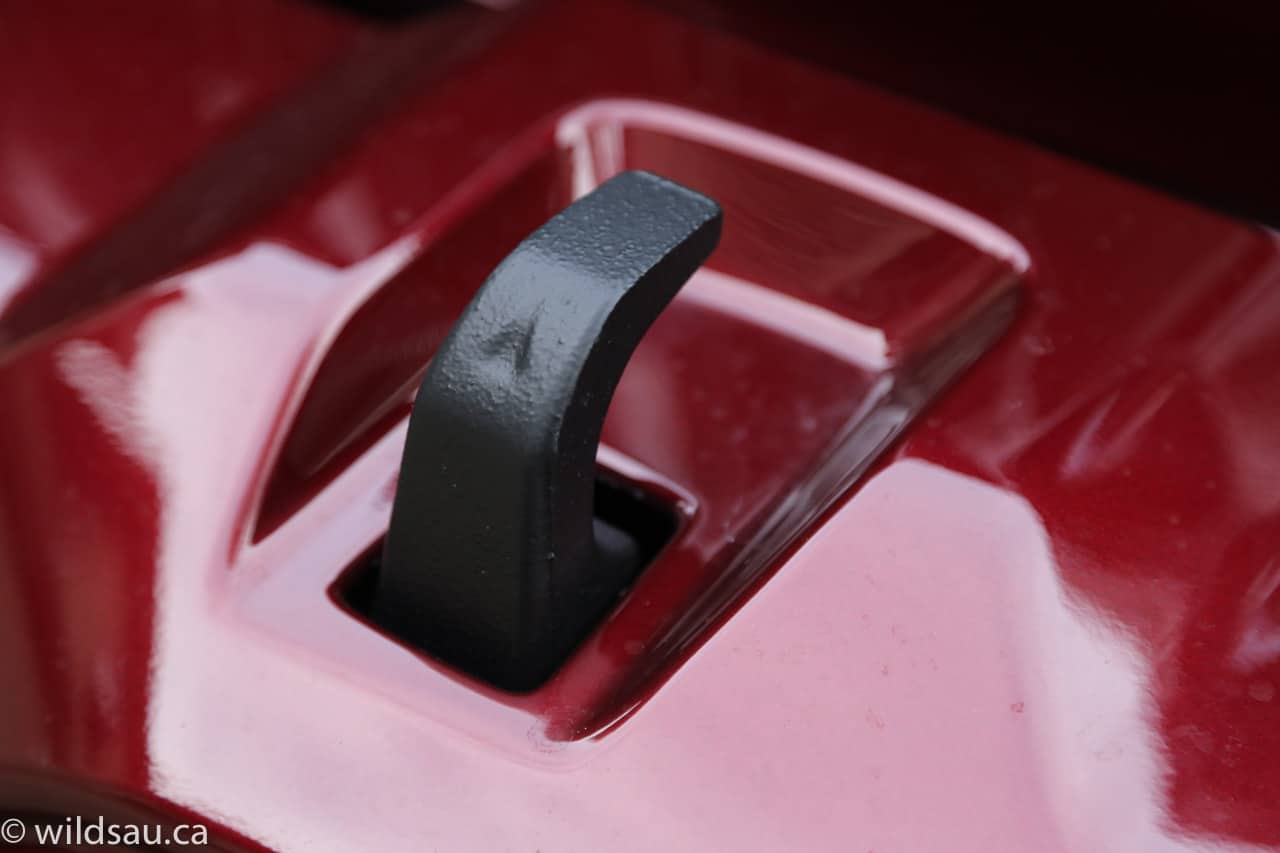
We were able to experience a range of different scenarios while we had the Gladiator. We had a freak snowstorm that left us wallowing in inches of fresh snow – the truck handled the bad roads with ease. We also got to take a little road trip, which allowed us to spend additional time on the highway. The wandering character that requires constant correction does get tiresome, although it was better than my last review sample of the Gladiator, and the wind noise became excessive.
We were also able to do some off-roading. It was relatively mild stuff, but heavy-duty enough that you wouldn’t be able to do it with a crossover. The Gladiator handled it like a champ, soaking up big bumps and hits, clambering over steep rises and rock piles and generally giving off an air of indifference the entire time, as if it didn’t even have to try. The trails we hit, and the logging roads we discovered were absolutely no challenge for the Gladiator.
Aside from the drive, we did feel that the lack of inside storage makes this vehicle a difficult road trip partner when it comes to families. With three kids inside, there’s no place for luggage, and if you have a couple or more bikes in the box, there’s little room left over to put stuff in the back as well. Compare that to a regular full-size truck, where crew cabs are limo-sized and the boxes are measurably bigger.
Jeep Stuff
This is a Wrangler-based Jeep product and thus, you can expect it to perform admirably off-road. As a matter of fact, as I’ve noted above, it probably performs more admirably off-road than it does on-road.
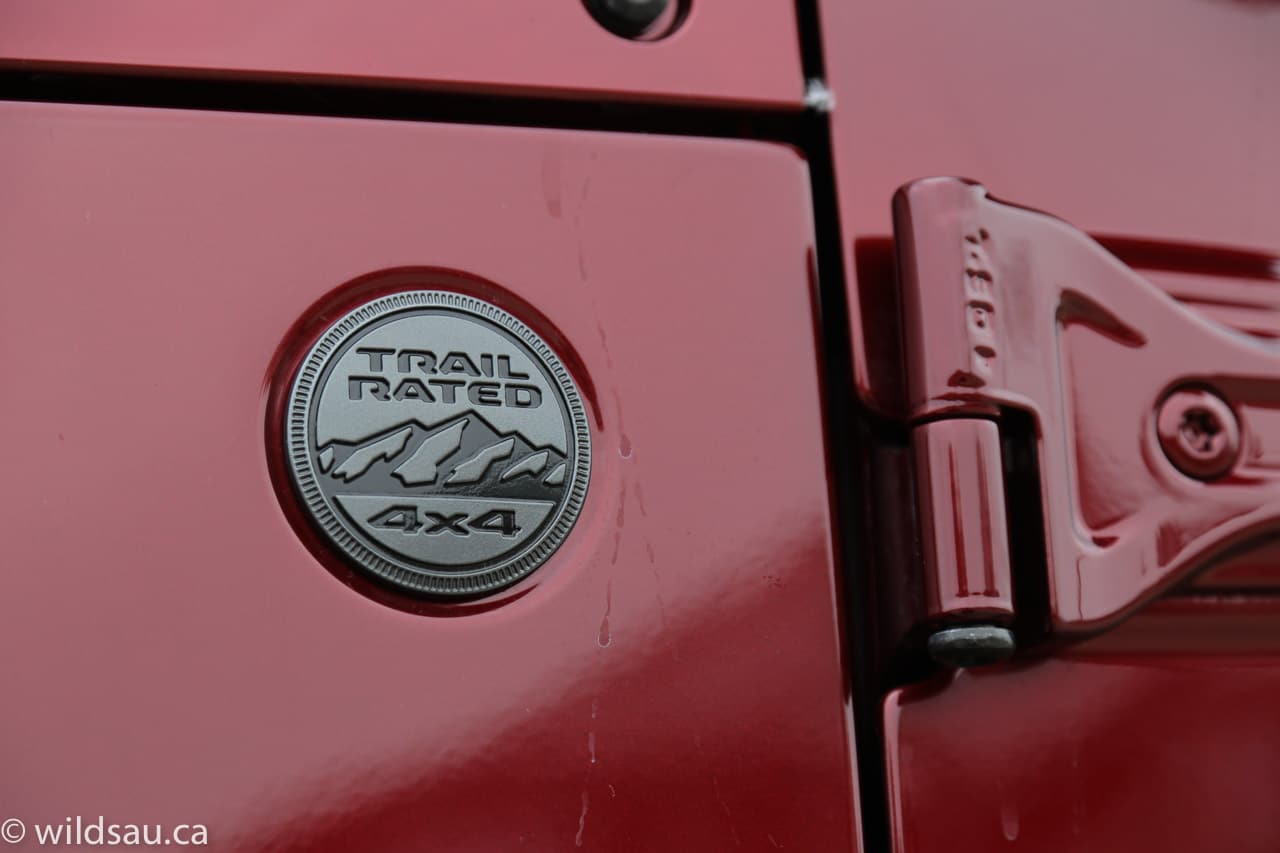
Should you be one of those owners that does punish their Gladiator and uses it for what it was made for, you can rest assured it comes well-equipped. And with the options as seen here, it takes it up a whole bunch of notches.
My Gladiator sported fuel-tank and transfer case skid plates, the Command-Trac part-time 4×4 system with selectable high and low ranges, Dana axles (M210 in front, and an M220 in the rear) and a 3.73 rear axle.
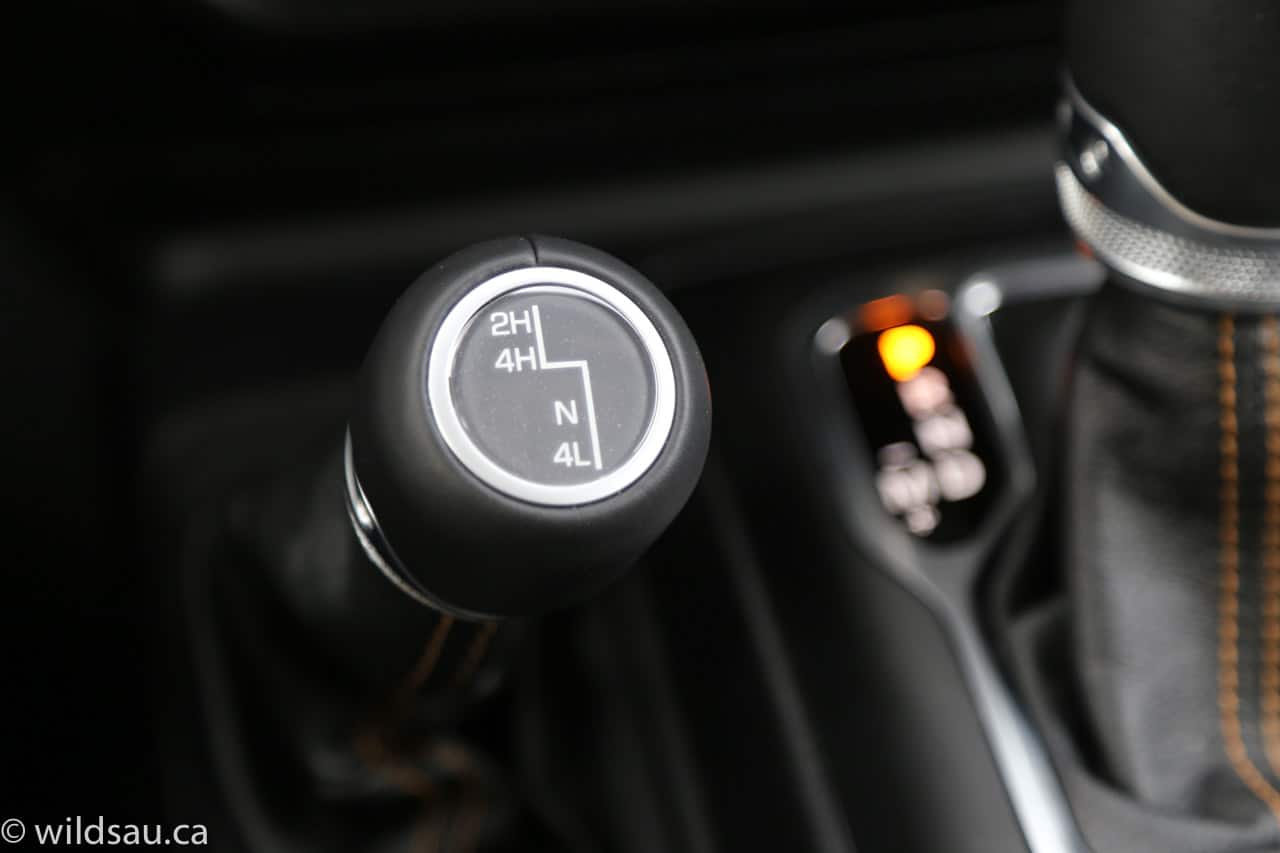
If you add accessories to your Jeep, you’ll likely spring for the auxiliary switch option – it adds four auxiliary switches for stuff like winches, light bars, etc. and bumps up the battery to 700 amps.
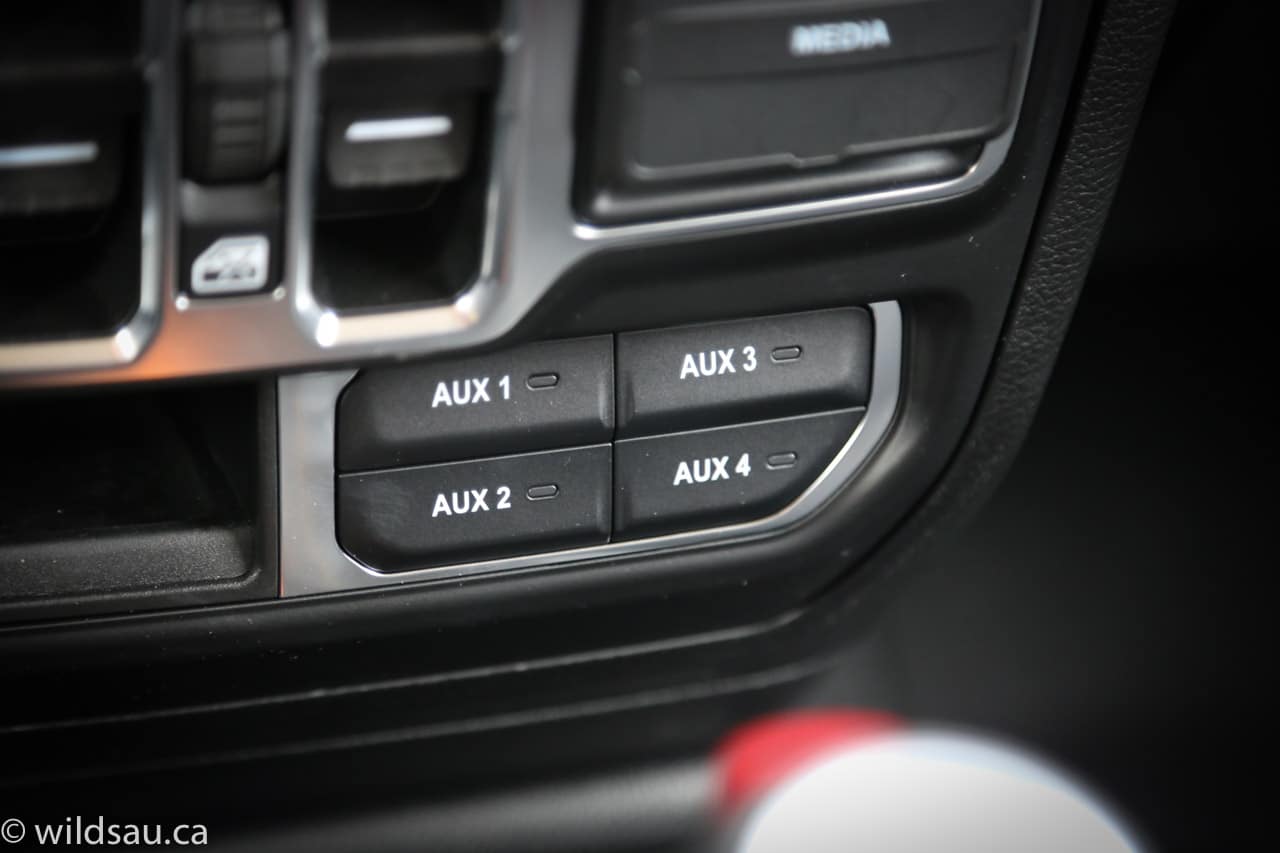
Jeeps also need to be able to shed body parts for the full Jeep lifestyle. My Gladiator has the body-coloured Freedom Top 3-piece removable hard-top and removable doors – and it comes complete with a hidden on-board Torx toolkit to pull this job off. The doors and back portion of the roof require some work and another person to help, but you can quickly pop off either or both of the front roof panels using just their latches for a bit of open-roof driving. There’s also a storage bag for the Freedom panels.
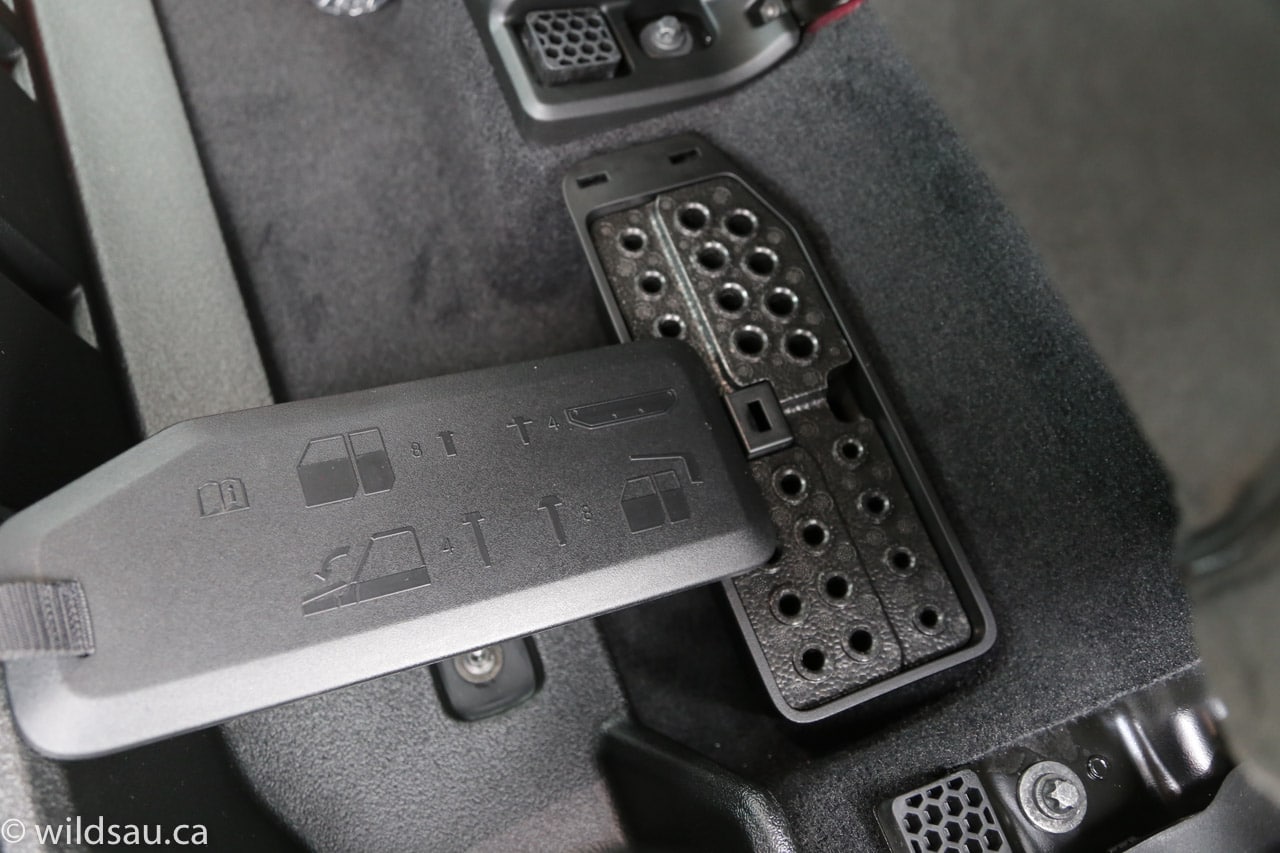
Oh and hey, speaking of lifestyle – how about this super-cool ultra-rugged portable Bluetooth speaker? Is it a rip-off? You bet. But I still love it. It stores and charges on-board behind the rear seats, it’s water and dust resistant and it’s an awesome and fun feature.
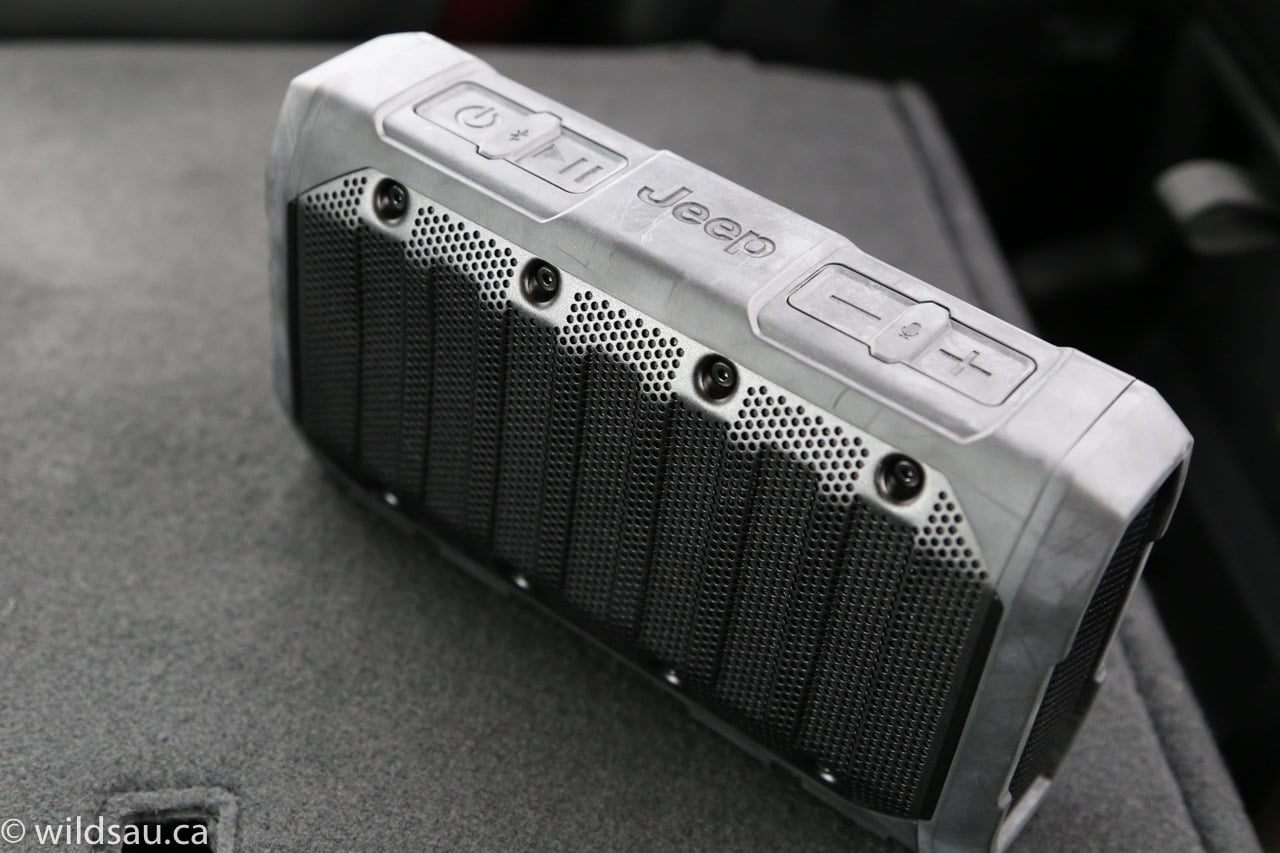
Truck Stuff
I didn’t know what order to put these sections in. Do I talk about truck stuff first, or Jeep stuff first? I decided more people are buying this for the Jeep-iness rather than the truck-iness. And they would be right for doing so, because honestly, it’s not the greatest truck.
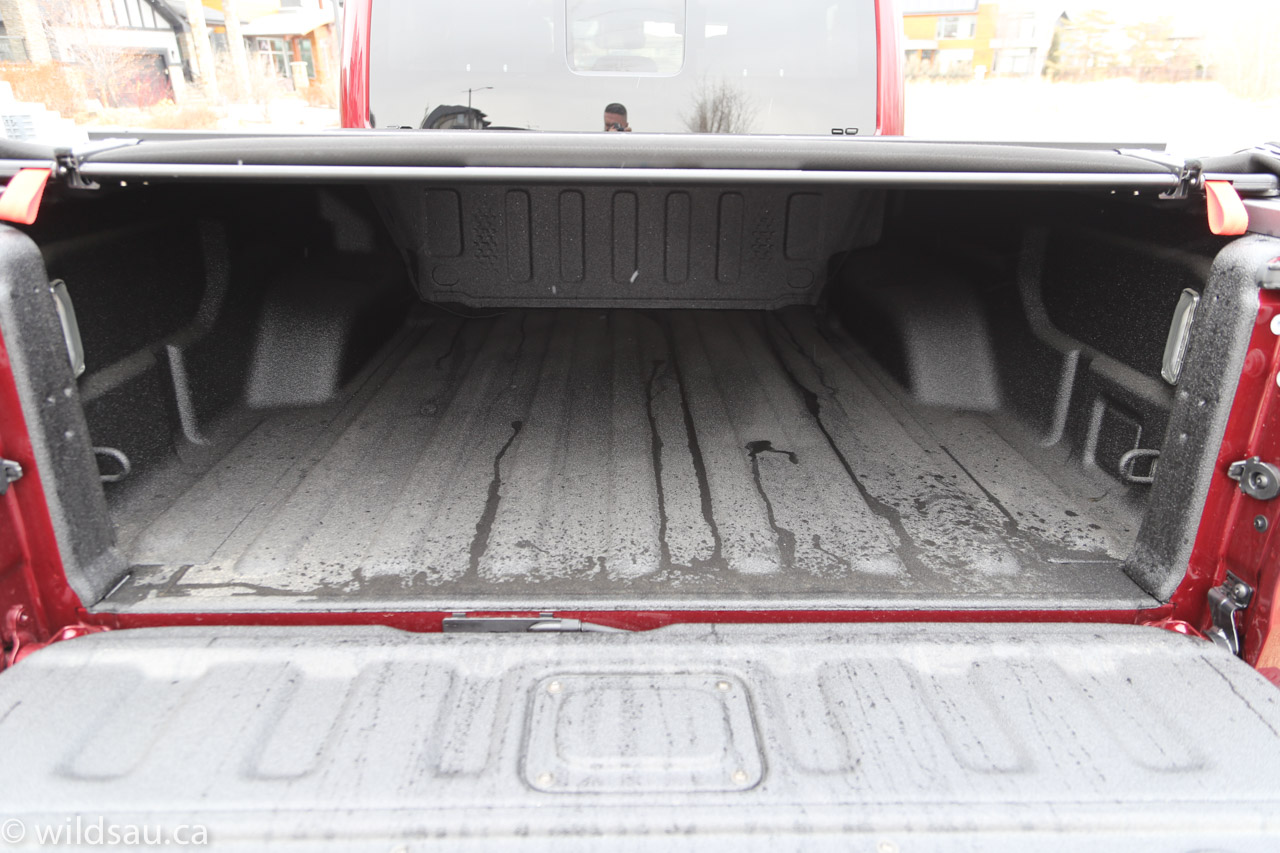
The box is small – it comes with a very tough sprayed-in liner and a couple of tie-down hooks, as well as a nice bright box light. But its size is very limiting – here is my son’s 24-inch bike, which takes up the box’s full dimensions. You can not lay down a full-size bicycle in the Gladiator’s box.
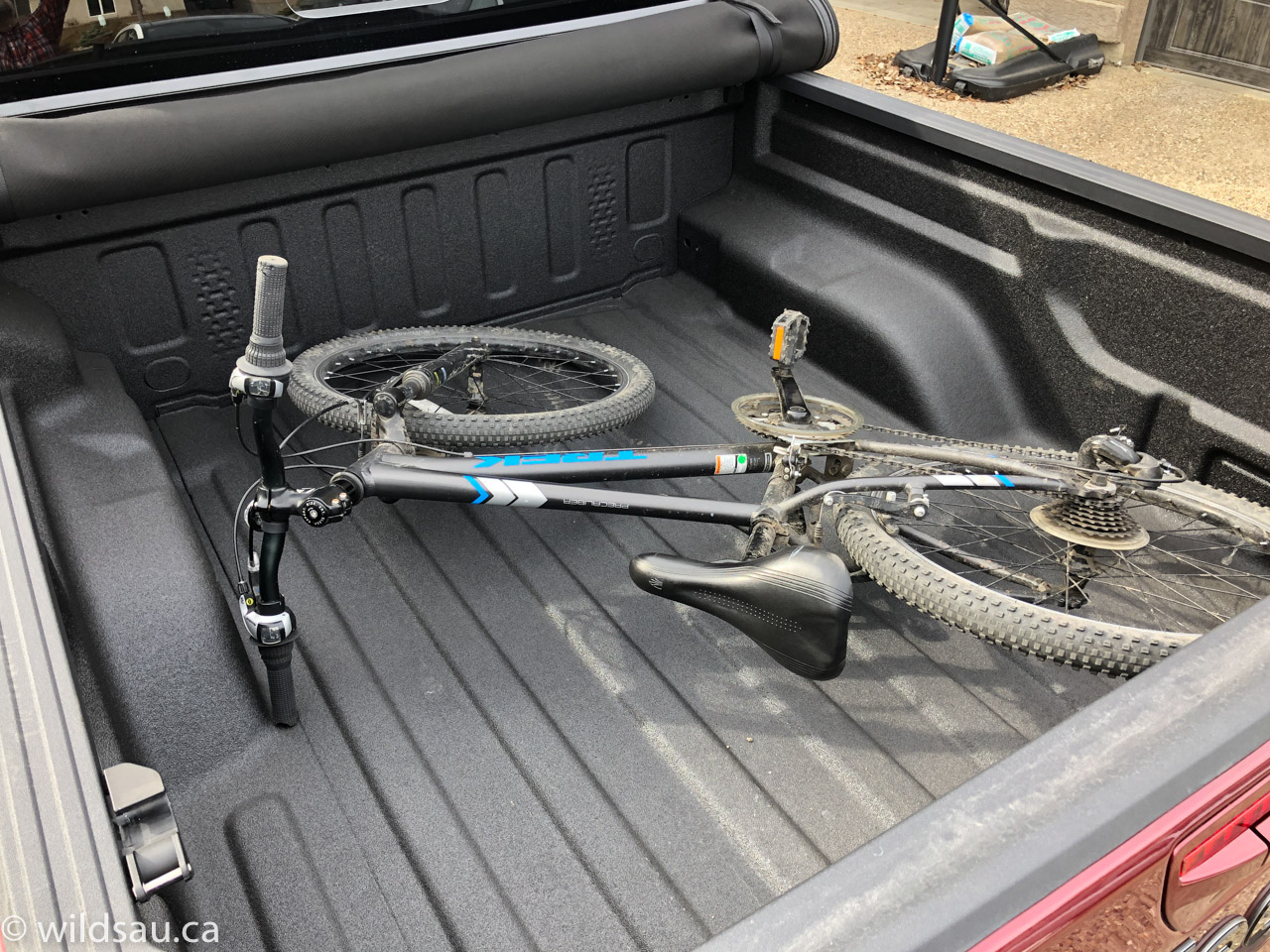
So yeah – it’s small. I really did like the simplicity and effectiveness of the roll-up tonneau cover. It works when you need to cover the box, it’s very simple to roll up and lash into place, and you can easily remove it completely as well.
If you’re towing, you may be dismayed at the maximum capacity of 6,000 pounds, particularly in light of the fact that this stump-pulling diesel engine actually pulls 1,650 pounds less than the normal gas-powered Gladiator. That’s a marked difference. Apparently it’s a cooling issue. This puts it at a disadvantage when compared to most other small trucks. It does come equipped to tow out of the box though with 4- and 7-pin wiring harnesses and Class II receiver.
And frankly, the payload capacity of 1,075 pounds (488 kg) isn’t super-impressive either and is surpassed by most other small trucks on the market.
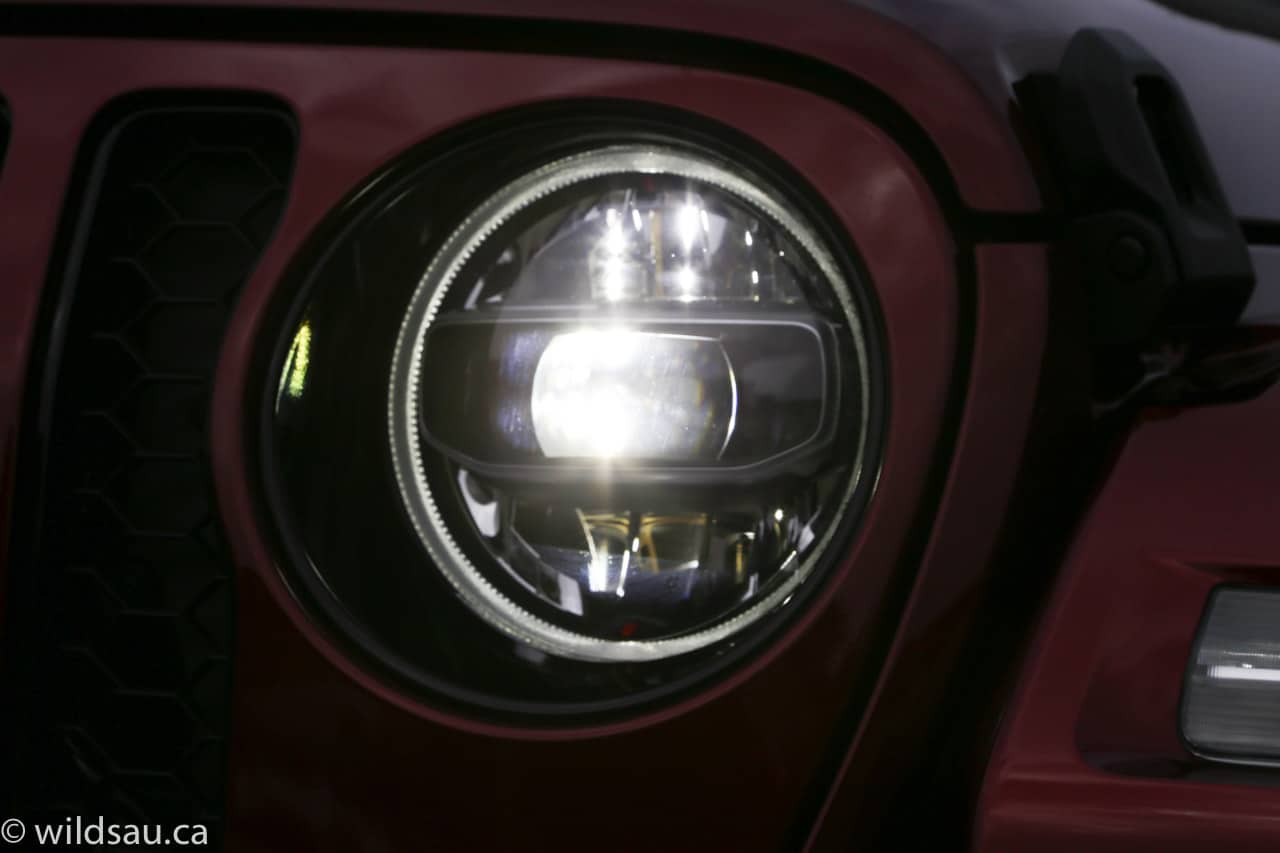
Nitpicks
I guess at this price, my biggest nitpicks are the little things that are missing. The seats should be power-adjustable and ventilated, the rear seats should be heated, etc.
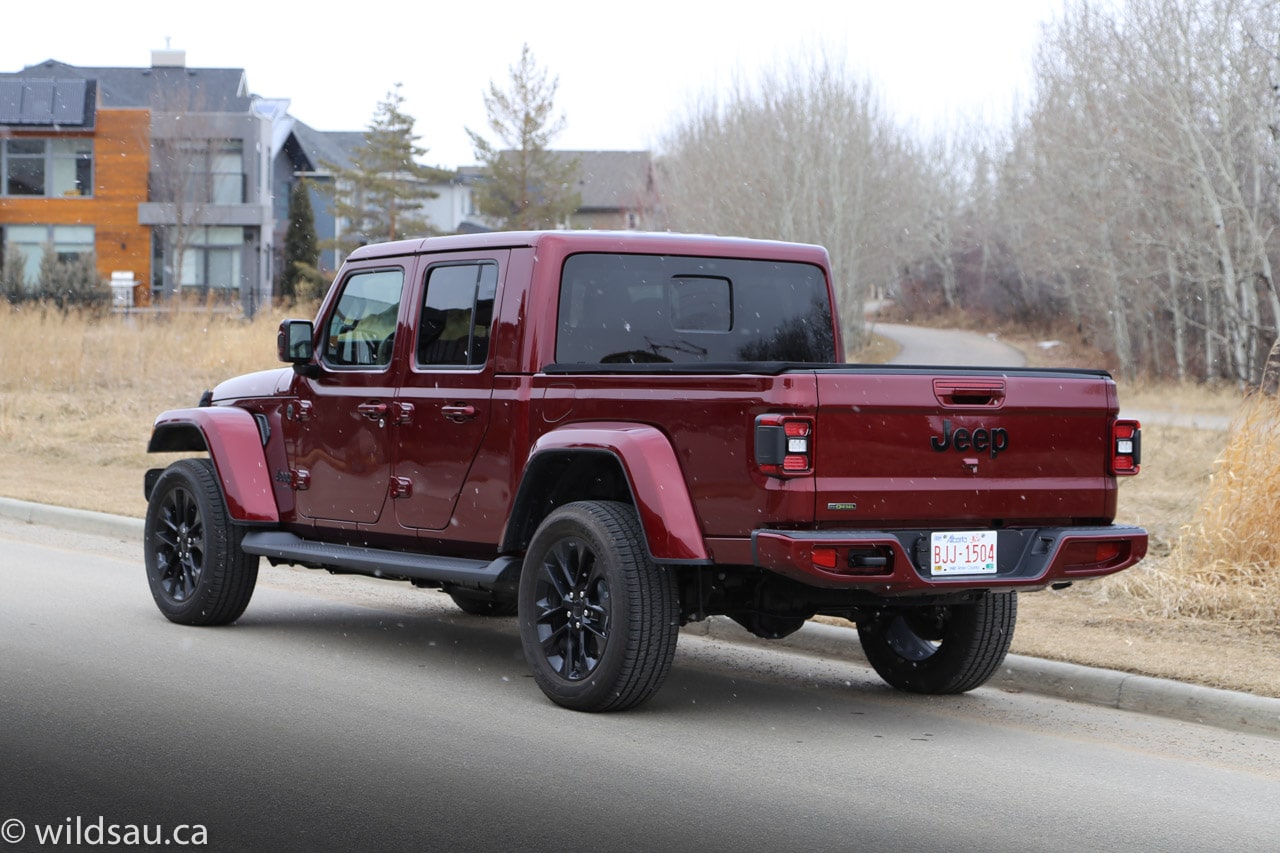
The Verdict
WAF (Wife Approval Factor) was low. She hates this thing, from its looks to how it drives. There was no winning her over. She hated the last one, and she hated this one too.
So is this a great truck? No. It hauls and tows less than the competition, and the box is smaller. Is it a great road-trip vehicle? No. It wanders on the highway, and the wind noise will overpower your voices and the stereo. Is it the ultimate off-roader? Nope, it’s great, but a Wrangler will beat it on the trails due to the shorter wheelbase and rear overhang.
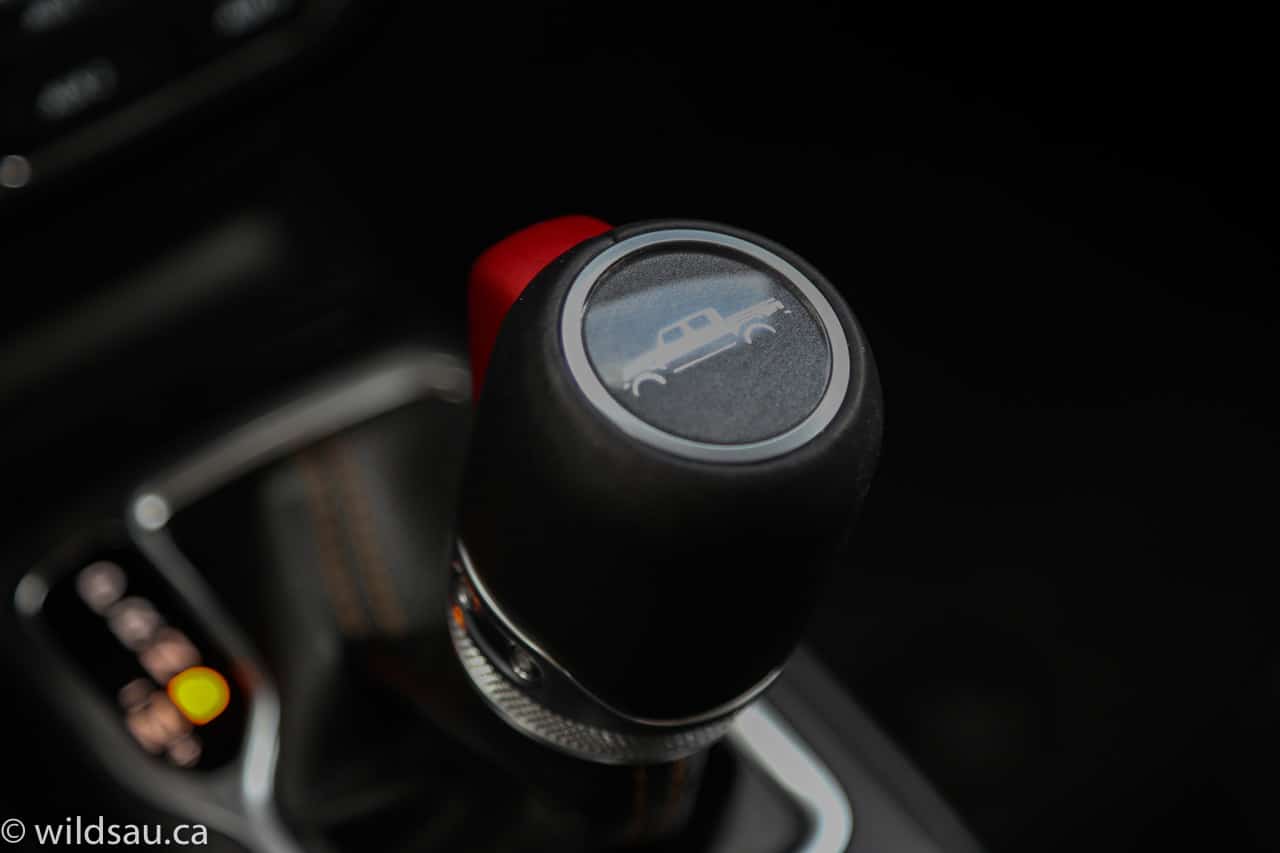
So what is this thing? It really boils down to being a lifestyle vehicle, pure and simple. It’s a visual statement, to be sure, but otherwise, it has to fit into a very specific niche of needs and wants, and because you have to pay dearly for that, it’s not for everyone.
For this money you can easily buy a full-size truck that is far more capable in every way on the road. Or you can spend less and get a Wrangler that can do more off-road. It’s hard to explain, because I still want a Gladiator. I can even say with certainty that it’s not a smart purchase, but I still want one.
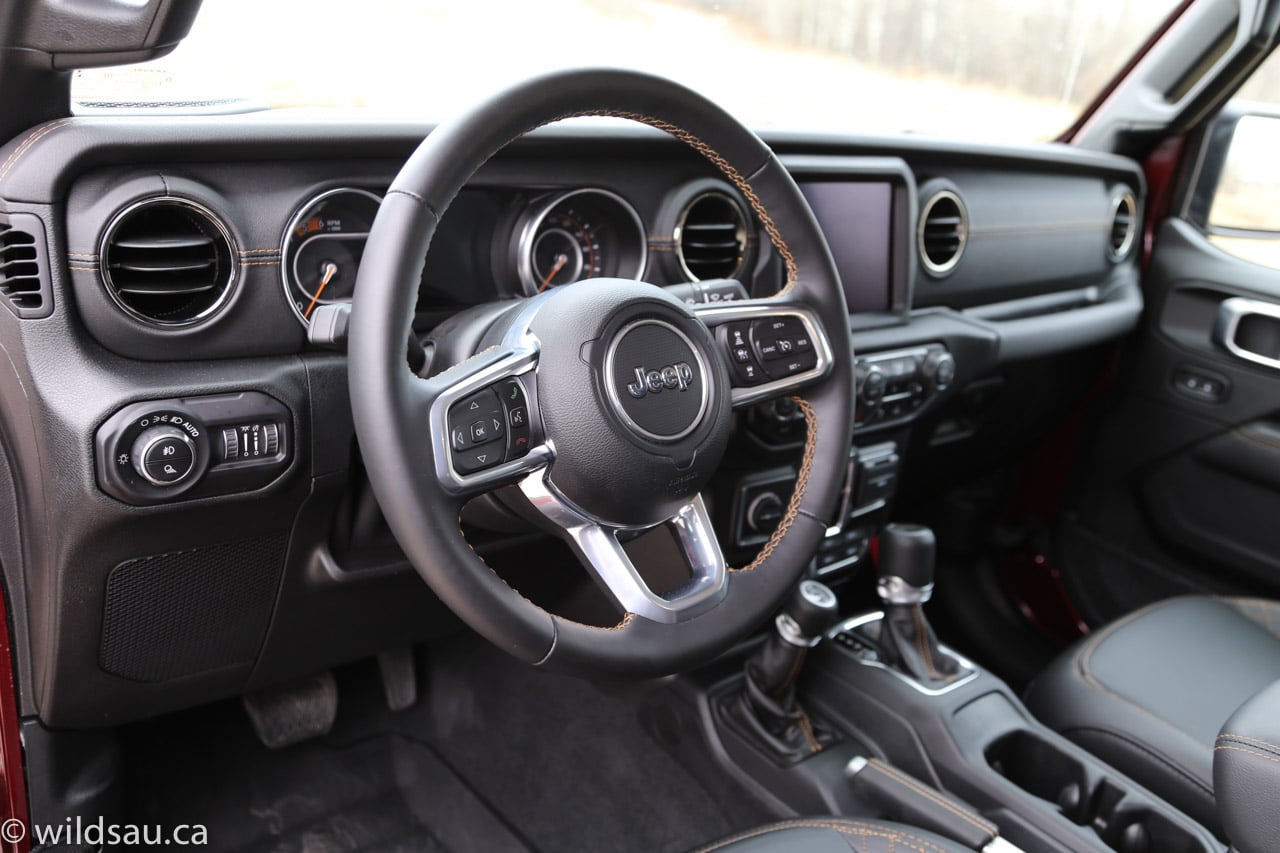
Is the diesel upgrade worth it? Probably not. The gas-engine Gladiator is fine, and although the diesel is better around town and at the gas pump, it would take you a long time to make up the difference in fuel savings considering the $8,000 upgrade price. And it actually tows less and is slightly disappointing at highway speeds.

Disclosure: Vehicle was provided by FCA Canada.
If you enjoyed this review, feel free to check out my other vehicle reviews under the car reviews tab at the top of my blog.
